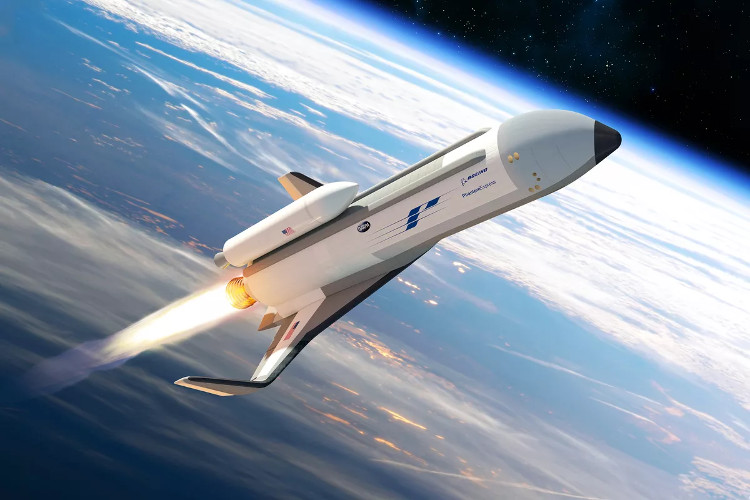The US developed the new generation XS-1 supersonic spacecraft
The Defense Defense Research Projects Agency (DARPA) of the US Department of Defense announced that it has chosen Boeing to design, manufacture and test unmanned supersonic supersonic spacecraft with the new generation. The name 1 (XS-1) test spacecraft is capable of flying 10 times in 10 days.
The XS-1 unmanned spacecraft is about the same size as a civilian aircraft, capable of taking off vertically like a missile's working mechanism and flying at supersonic speeds.
However, unlike the US military's X-37B spacecraft, the XS-1 is powered by independent frozen compressed air without using an external accelerator.
When certain trajectory is reached, the XS-1 will drop a self-destruct launcher that can launch a satellite with a weight of about 1.360kg into orbit.
Once completed, the XS-1 returns to Earth, landing like normal planes and preparing for the next flight in just a few hours. With this current technology, launching satellites into orbit takes months and even years of preparation.

XS-1 is designed to convert the satellite launch process.
According to DARPA, XS-1 production will need significant advances in science and technology, but this will revolutionize the ability to recover the loss of military or commercial satellites that the US is dependent on. .
DARPA Program Director, Jess Sponablen, said XS-1 is a combination of a traditional aircraft and a conventional vehicle, with the goal of reducing the cost of launching and replacing technology that is consuming much. Time to launch now with the ability to launch as required.
Meanwhile, Darryl Davis, Boeing's Head of Security, Space and Defense, said the XS-1 was designed to convert the satellite launch process , thereby creating the ability to launch on demand. with low cost and less risk.
Boeing will conduct 10 tests of XS-1 engines in the ground environment over a period of 10 consecutive days to ensure that the XS-1 will be ready for the first test flight in 2019 It is expected that by 2020, XS-1 will have to undergo 12-15 test flights.
After successful flight tests, DARPA will put XS-1 into operation for 10 consecutive days. The first phase of XS-1 will fly with no load at 5 times the speed of sound. The flights will then have the same speed as Mach 10 and carry a load of 400-1,360kg into orbit Earth.
If this program is successful, the cost of each take-off of the XS-1 is less than 5 million USD, including the cost of the self-destruct launcher. This is only a fraction of what the US military is spending on similar payload systems.
- Video: The supersonic plane with the speed of over 2,700km / h is about to be tested
- NASA orders to build a new generation supersonic jet
- 3D printed ceramics make supersonic aircraft covers
- Reveal the new generation spacecraft of Russia
- Super-spacecraft launches satellites into space
- Dizzy watching American supersonic equipment run at 8 times the speed of sound
- It only takes 3 hours to fly from the US to England?
- Chinese rockets attach vehicles to attack 5 times faster
- NASA wants to revive supersonic air transport
- Intergalactic supersonic jet
- NASA plans to build supersonic civil planes
- Will supersonic rockets start World War 3?
 Van Allen's belt and evidence that the Apollo 11 mission to the Moon was myth
Van Allen's belt and evidence that the Apollo 11 mission to the Moon was myth The levels of civilization in the universe (Kardashev scale)
The levels of civilization in the universe (Kardashev scale) Today Mars, the sun and the Earth are aligned
Today Mars, the sun and the Earth are aligned The Amazon owner announced a secret plan to build a space base for thousands of people
The Amazon owner announced a secret plan to build a space base for thousands of people